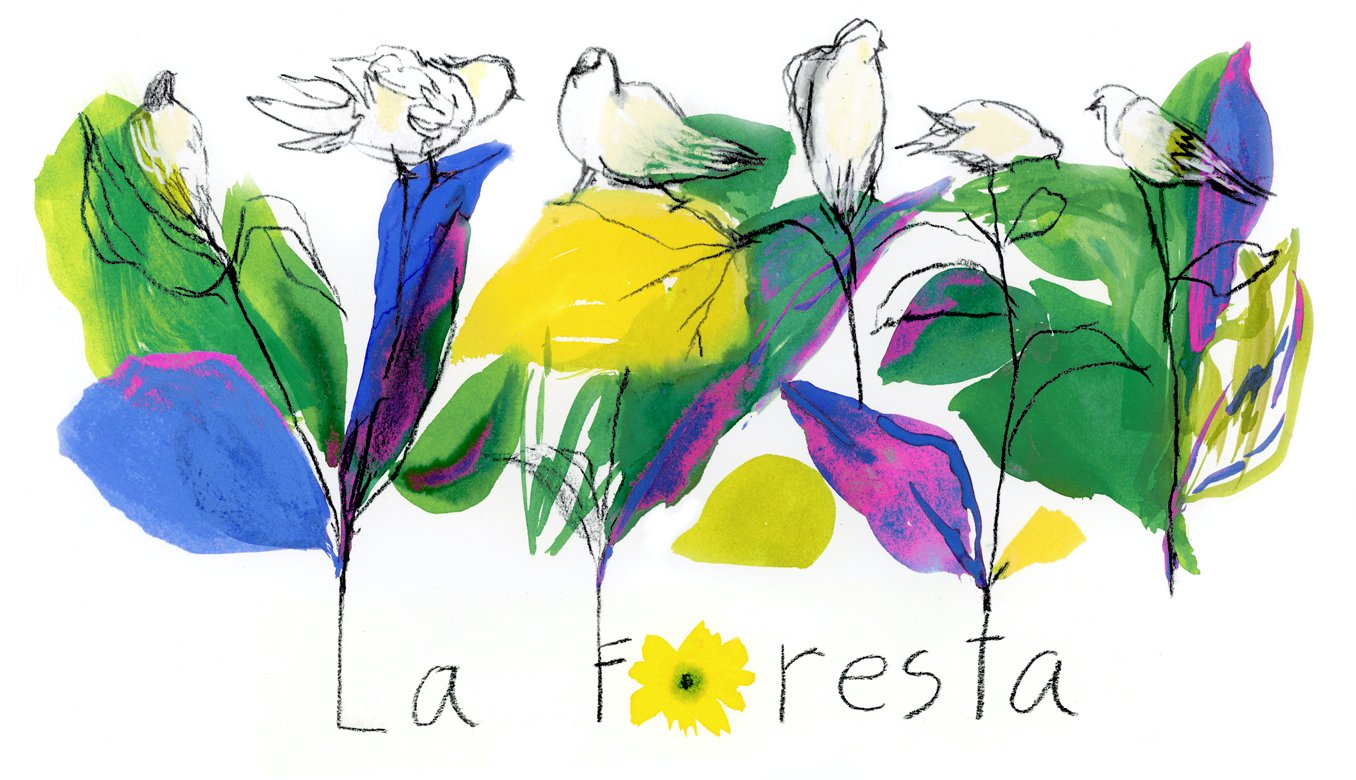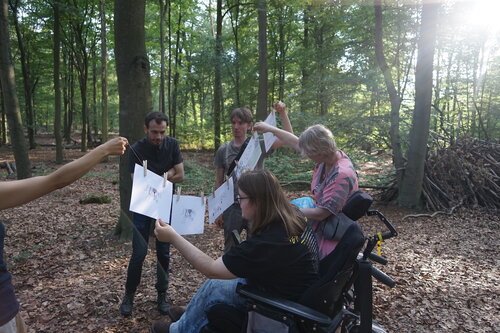Personal Museum
commission-based museum experience as a MER (Museum for Ecological Restoration)
Personal Museum is an ecologically grounded social space that temporarily inhabits an existing museum, and invites to engage into a plurivocal conversation on meaning and significance of art and culture in relation to lived life experiences within contemporary ecologies. It is dedicated to reconstruction of relational worlds. Personal Museum is designed to let participants spend time in a museum with a higher level of attention and engage with works of art through direct association with their own experiences. It nurtures engagement and relation (not only spectatorship), exploring forms of healing and reconnection with Earth’s living systems, holding space for meaningful connections, deeper reflection and honest exchange related to subjects of ecologies: from personal and relational to natural and cultural.
Personal Museum proposes a series of experiences for questioning, discerning, unlearning, re-connecting and intentioning, to critically reflect on a proposed subject, as well as to invest into imagination, invention of other imaginaries, reflection and representation of the world as one’s own. Resonating with the work of Luis Camnitzer around art thinking, Personal Museum offers three perspectives of engaging with artworks: looking at an artwork (admiring the craft), looking around an artwork (the context where it comes from), and looking through an artwork (relating what you see to your own life, rather than speculating what the artist wanted to say, bringing the experience to a more personal level: what you see, what you choose to pay attention to, what it makes you think of, how it makes you feel). We facilitate such engagement through embodied inquiries, collective reflection and slow art experiences, rooted in embodied culture.
Embodied culture is at the core of our researchpractices at Foresta Academy. We describe it as a culture with an expanded field of attention at its roots, inspired by the integrity of Earth’s living systems. It’s seeking re-integration of the world in a larger sense. Thinking, feeling, sensing, rationality, physicality, relationality — all the different aspects of human experience are playing together like a jazz band, in diversity, in free play.
Personal Museum KIDS >>
Personal Museum OUTDOORS <<
Modules
We offer Personal Museum in a variety of formats. The work is site-specific and place-responsive. Each Personal Museum is unique to each particular space and its ecology, human and more-than-human companions, objects and artworks that inhabit it.
Embodied Vision
Embodied Vision is a Slow Art experience, connected to the practice of embodied awareness. It aims to shift the habit of treating the world as a place that can be looked at from the outside but not lived in, sensed and felt. Inspired by embodied inquiry, and the work of Maurice Merleau-Ponty on perception and ontology, among others, the format of this module can be described as a mix between a participatory museum tour and a writing/drawing/making workshop. Embodied awareness practices support participants in approaching the artworks closer, to sense and feel them, to let them reflect their lives back, to widen attention beyond concentration. In this module participants nurture an ability to notice and reflect upon own feelings and motivations without the immediate need to act upon them, as a real-life situations would require.
Personal Museum Book
This experience is built around a simple book that we design for a particular museum. Books are thematic and also specific to a museum. Themes include “art as awareness”, “poetic vision in everyday life”, “ecologies”, and others. Books allow for independent exploration of a museum, open space to stand still in front of artworks, to take time, to pay attention, to develop qualities of receptivity, to ponder on questions, to sense personal response, the affect created by the work of art, to express impressions. In case this module is couples with a collective practice module (any of the other ones), there is then also an invitation to join a conversation and exchange experiences and observations with other participants.
Exploring the Senses
In a world where we find ourselves living in the digital and the virtual much of the time, this module invites multi-sensory perspectives to lead the journey. Sensory perception allows to experience reality on multiple levels. Through the integral relation of senses with each other as well as how they are allied with the notions of the body, emotion and cultural memory, looking at the artworks becomes only one part of the experience in a museum. What olfactory memories do artworks evoke? How to interpret artworks in smell? Which rhythms exist in this space? How do the artworks sound? In this module we also offer a workshop Voices in Museum.
Collective Storytelling
This module is designed as an interactive itinerary through a museum: alone, in pairs, and together as a group. The entire experience is suitable for a group between 3 to 20 people, and lasts ca. 3 hours. It starts with an impulse, which may take different forms: from a written message to a musical intervention, and an invitation into a personal or collective inquiry, followed by a making session and an exchange with other participants. It’s reflective space on the one hand, for a deeper self-awareness, and a playful interaction on the other, to notice resonances and to open up for conversations.
Personal Museum as part of Books of Forests
Ideas and Context
Museum space feels like a modern temple: a collection of sacred objects, a place of connection to past generations, a learning ground to enrich one’s horizon about cultures, places and people. It is a place that is sharing love for art, and offers to spark visitor’s imagination and creativity. It is also a place of often problematic and controversial traces of histories, entangled relationships, colonial landscapes. How to be with all that heritage and possibility, past and future, all contained within a present moment? What is the role of a visitor? What could be potentials for healing and restoration of bondings that a museum space could offer? What if a museum could transform itself? What if, through art, it could invite and facilitate a more profound connection to oneself, the others and the larger ecologies we inhabit?
Traditionally the visitors are seen as recipients of content, and more often than not find themselves on a rather standardised journey, keeping an outer as well as inner distance from the surrounding objects and people. The idea of Personal Museum is to facilitate a more dynamic and creative way for a museum to engage its audiences, to become a catalyst rather than a preserver, to be actively creating new cultural landmarks that might reach and touch people in more profound ways. We feel a need for a museum to become a more lively place, involving more of a human being beside their ability to look at works of art and receive factual information about them. Rather than staying a passive recipient we invite people to research their perception, different ways to gain knowledge, to interact with other museum visitors, to connect to the artworks through involving senses in a more embodied way.
Personal Museum is an exploration of participants’ stories and imagination reflected by the works of art, as well as a larger conversation about the contemporary ecologies and regeneration. An art object becomes a guide into multitudes of inner and outer experiences. Going beyond a theoretical discussion educating knowledge of art history and aesthetic taste, we let the artworks touch us and find ourselves reflected in them. This process becomes a research into ourselves and the world we experience. We learn to let go of habitual patterns of being in a museum, to come closer to an artwork and to our sensitivity in front of it, to reflect on human experience and exchange with others, to trust own perception and vision, to stretch creativity and awareness. Such an experience offers participants to be both receptive and creative: to perceive and to respond, to take in and to express. To engage in a process that can be associated with a path of shaping life itself into a work of art.
*Slow Art
Slow art in times of instant everything gives a context to bring together art perception and embodied awareness, to experience art without an expert, to contemplate, and to expand one's inner and outer attention. Art as opposed to entertainment is that which rewards lingering: the more you look the more you see, artworks start to move, to change in front of you, to tell stories in new ways. Mini into-the-body sessions that accompany slow art experience contain simple yet powerful exercises of breathing, stretching and shifting attention to the present through experience of the body. It also involves spending time in individual contemplation of an artwork, taking in its inputs, tuning in to what it is telling us, and our responses to it. As well as, then, exchanging insights and impressions with others.
>> To visit Personal Museum for Kids click here
Photos: Foresta Collective (Bode Museum, Museum Berggruen, Naturkundemuseum)
Illustration: Violeta Lopiz, Carolina Celas















